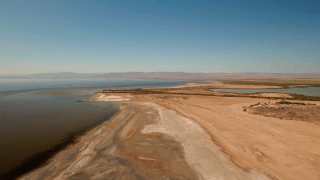
There is something majestic about the Salton Sea, one of the world's largest inland seas and lowest spots on earth at -227 below sea level. The people who live there know its majesty on a daily basis. So do the thousands of Coachella Valley visitors, Instagrammers, and lookie -loos who drive about three hours southeast of Los Angeles see it for themselves each year.
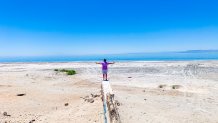
When they visit, they find a desolate area that feels more like a scene from “Mad Max” than what you might expect from a weekend at the lake. The Salton Sea is a man-made body of water that was created during a series of overly ambitious but ultimately unfortunate events in 1905. And over the years has seen many iterations from a farming community, to a playground for the Rat Pack.
Today, it’s a fairly well-known fact that the Salton Sea is dying. But most people may not know to what extent, and how far reaching the physical and financial impact its death will have.
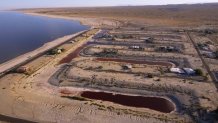
A new award-winning documentary from Gravitas Ventures called “Miracle in the Desert: The Rise and Fall of the Salton Sea” shines a piercing light on how the Salton Sea became what it is today. And, just how devastating the environmental disaster will be for the people who live in the Coachella Valley, Imperial County and beyond if it goes unaddressed. Experts in the film say if it’s not corrected soon, the cost of damage from the Salton Sea could reach into the tens of billions of dollars over the next several years.
Entertainment
Writer/director Greg Bassenian (“C.S.I. Miami”) says like many people, he too was captivated by the Salton Sea and her story.
"The Salton Sea is a cautionary tale of ego, ambition and neglect that stand to impact the health of millions of people, many of them right here in Southern California. There's been a lot of said about the Salton Sea in the past, but this film sets the record straight,” Bassenian says. “You might not believe some of what you see, but we assure you, it's all real and happening as we speak.”
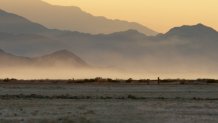
So, what is happening at the Salton Sea that’s creating such alarm in the community and a cry for help from the government in Sacramento? Essentially, the sea is drying up. And what’s left behind is toxic dust creating serious health problems for the residents who not only live next to the Salton Sea, but in nearby communities.
The film explains that this isn’t just a problem for Imperial County and the Coachella Valley. The toxic dust is being blown miles away, even reaching as far as Los Angeles and San Diego.
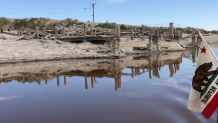
“The impacts to air are going to grow more quickly because the water has been taken away. It’s going down very quickly and it’s going to continue to do so. And it’s going to emit more particulate into the air. And with the fires that are happening, we now know what that means to the people who have to breath that in,” Bassenian says.”
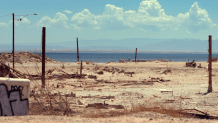
The film dives deep into the unlucky and mismanaged history of the region from failed levees and water distribution policies, to back-to-back hurricanes, and changing water rights that all contributed to the community’s constant struggle to survive. The film highlights the efforts of Salton Sea advocates who have taken it upon themselves to give the area a voice in Sacramento but frustratingly continue to hit a wall of government red tape.
“In 2009, there was a plan put together by the state called the Preferred Alternative, which would potentially allocate $9 billion to fix the problem. But because of the financial crisis, that went away. Then in 2018, the 10 Year Plan came around and it’s not being stuck to. It’s far, far behind. Now, you’ve got COVID and another financial crisis. So the Salton Sea seems to always be this place that encounters obstacles,” Bassenian says.
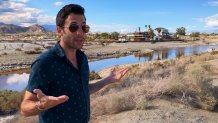
In the film, former Salton Sea Mayor Kerry Morrison further explains the situation the community is facing.
“Millions of people are within air quality range of this basin. And the air quality is dropping and people are getting sicker, and sicker,” Morrison says.
The Salton Sea was fed by irrigation run off for a hundred years. But experts in the film say a water rights plan called the Quantification Settlement Agreement in 2003 effectively paid farmers to not use water, so that it could be diverted to Los Angeles and San Diego for use as drinking water.
“This was the largest ag-to-urban water transfer the country had ever seen. And it gave the region a 15 year time limit to develop restoration and mitigation initiatives to make sure the Salton Sea wouldn’t become a disaster and that that quality of life generally in the region would still be able to thrive, while transferring more of the inflows to the coast,” Morrison explains in the film.

One of the most powerful parts of the documentary aside from the striking before and after images, puts a personal face to the impact of toxic dust from the Salton Sea. A young woman named Michelle Dugan shares her story of growing up with asthma in the Coachella Valley. She recounts the struggles and heartbreak of living with her condition and how it’s forever changed her life.
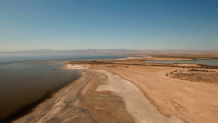
Bassenian says he hopes the film will give people, not just in California, but around the world a closer look at the impact of ecological disasters and the urgency that needs to be placed on local and federal governments to step in to not just announce solutions, but put them into action before it’s too late.
“It’s a slow moving problem. It’s not like a forest fire. It’s not like a freeway collapse. So people don’t pay attention. Will it get fixed? I think eventually it’s going to get so severe, they will have to suddenly come in and do something quickly,” Bassenian says.
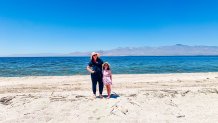
“Miracle in the Desert: The Rise and Fall of the Salton Sea” is available on all VOD/Digital & Blu-Ray/DVD platforms. There will also be a special screening of the film at the Palm Springs drive-in theater on Sept. 26.



